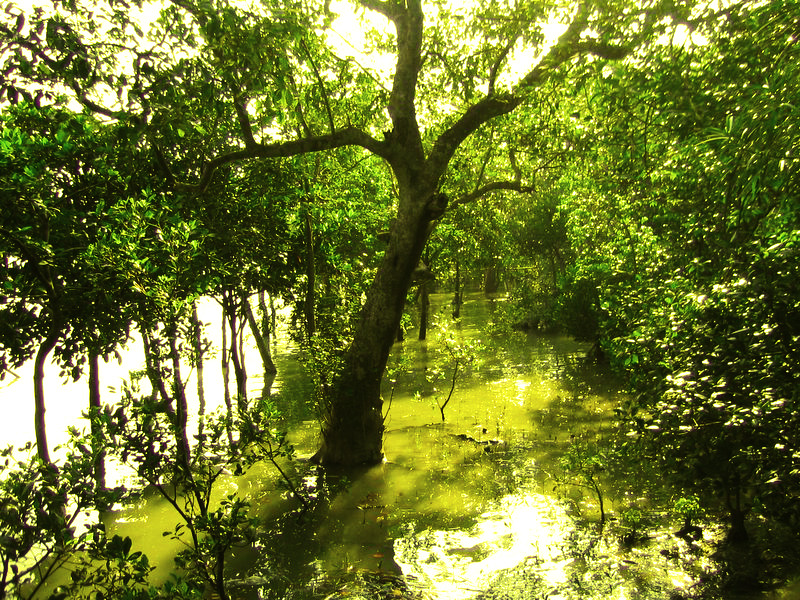সুন্দরবন
The Sundarbans consists of the world's largest mangrove forests with about 78 species of mangroves. Naturally, it contains a rich ecosystem of vegetation, minerals, resources, and animals. Most of the Sundarbans are within Bangladesh's territories (64%) and the rest in India (34%). The most significant populations of animals are the Bengal tiger, Irrawaddy and Ganges River dolphins, king cobra, migratory birds, and other endangered species. Interestingly enough, the Bengal tiger adapted to the land-water environment and is very amphibious in nature in that it can swim for long distances, and hunts marine animals. This amphibious nature is very dangerous for the locals that frequent the Sundarbans for fishing or gathering other resources such as honey and firewood. From 1975-1982 about 45 people were killed annually. For this reason, the Bengal tigers have a reputation as man-eaters in the region. The Sundarbans are an important facet of Bangladesh because it serves as a natural storm barrier, which is highly helpful during monsoon seasons, shore stabiliser (important because of rising water levels), and nutrient and sediment trap.
Sundarban (সুন্দরবন) vocabulary:


Comments